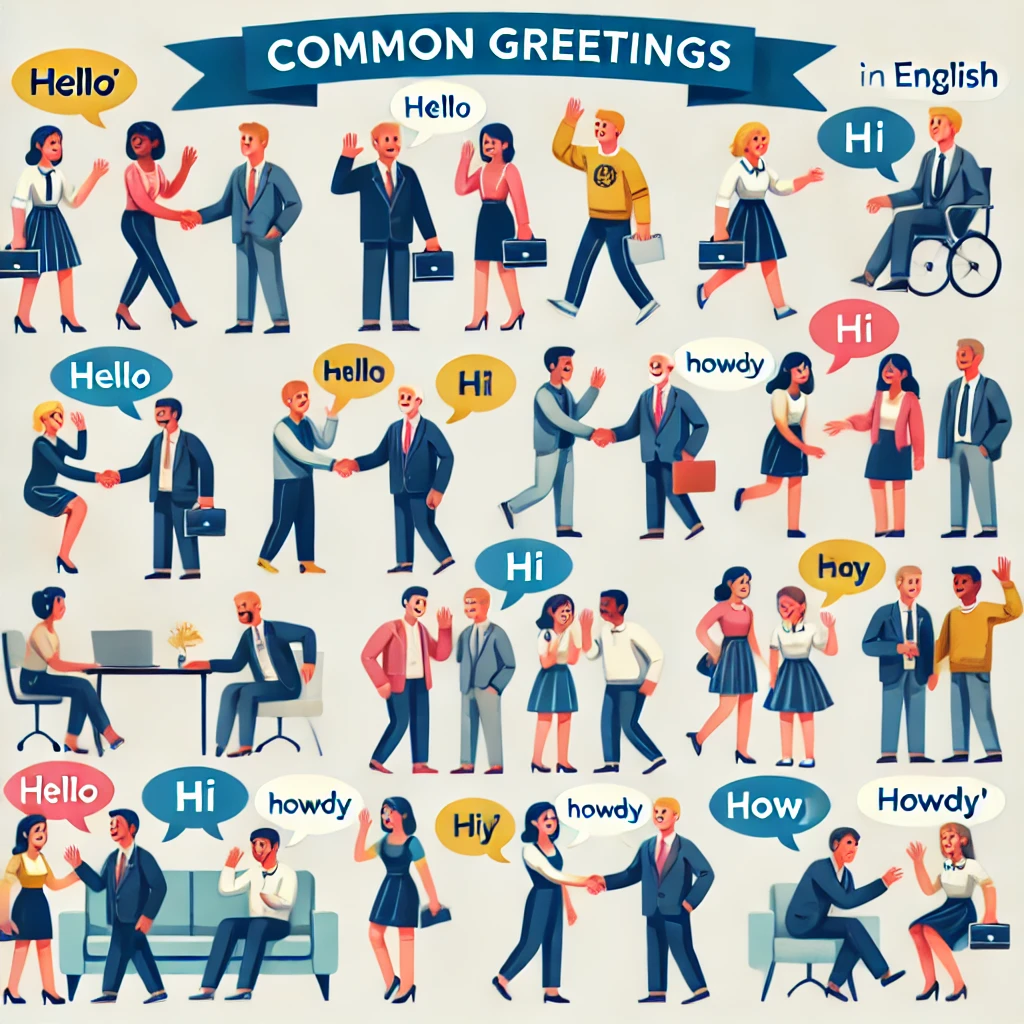Introduction
When learning a new language, one of the first things we all want to know is how to greet others. For English learners, understanding how to say “hello” or greet someone in different ways can make a huge difference in conversations. Whether you’re greeting a friend, a colleague, or someone you’ve just met, knowing the variety of ways to say “hola en inglés” will help you sound more natural and confident in your communication. In this article, we will dive into the many ways to greet someone in English, tips for responding to greetings, the cultural nuances behind them, and much more. Let’s get started on mastering greetings in English!
Common Greetings in English
There are several ways to greet someone in English, depending on the context, your relationship with the person, and even your location. Here are the most common greetings used in everyday English:
1. Hello / Hi / Hey
These are the classic greetings in English. “Hello” is the most neutral and can be used in any setting, from formal to informal. “Hi” and “Hey” are more casual and are usually reserved for friends, family, or acquaintances.
- Hello: Formal, polite, and appropriate in any situation.
- Hi: Less formal, used for friends or people you know well.
- Hey: Very casual, often used with close friends or peers.
2. Howdy
“Howdy” is a more playful and friendly greeting, often used in the United States, especially in the South and the Midwest. It’s an abbreviation of “How do you do?” and can be used informally in casual settings.
3. Good Morning / Good Afternoon / Good Evening
These greetings are time-specific and often more formal. If you’re meeting someone in the morning, afternoon, or evening, using “Good morning,” “Good afternoon,” or “Good evening” is appropriate.
- Good Morning: Used in the morning, typically until 12 PM.
- Good Afternoon: Used from 12 PM until about 6 PM.
- Good Evening: Used after 6 PM or when the sun begins to set.
4. What’s Up? / What’s New?
These are casual, informal greetings often used with friends or people you know well. They can be a great way to check in with someone you haven’t spoken to in a while.
5. How’s It Going?
A friendly and casual greeting, commonly used in informal settings. You can ask “How’s it going?” to check in with a friend or colleague.
6. Long Time No See!
If you haven’t seen someone in a while, this is a great greeting to show excitement about meeting them again. It’s casual and friendly.
How to Respond to Greetings in English
Once you know how to greet someone in English, it’s equally important to understand how to respond to these greetings. Here are some typical responses to common greetings:
1. How Are You?
When someone asks “How are you?” the usual response is something positive, unless you’re close to the person and want to share more. Common responses include:
- I’m good, thanks!
- I’m doing well, how about you?
- Great, thanks!
2. What’s Up? / What’s New?
If someone greets you with “What’s up?” or “What’s new?”, you can respond by sharing something casual about your day or life:
- Not much, just relaxing.
- Same old, same old. How about you?
- I’ve been busy with work, but all good!
3. Long Time No See!
If someone greets you with “Long time no see!” a good response might be:
- Yeah, it’s been a while! How have you been?
- I know! It’s great to see you again.
Cultural Context and Variations of Greetings
While greetings in English are often simple, it’s important to recognize that they can vary based on region, culture, and even personal relationships. For example:
1. American English vs. British English
In American English, greetings like “Howdy” or “What’s up?” are more common, especially in informal settings. Meanwhile, in British English, you might hear “How do you do?” or “Alright, mate?” used in informal conversations.
2. Greetings in the Workplace
In professional or business settings, you’re more likely to hear formal greetings such as “Good morning,” “How do you do?” or “It’s a pleasure to meet you.” These phrases convey respect and professionalism.
3. Regional Variations
Different regions and countries that speak English have their own unique greetings. For instance, Australians often greet each other with “G’day,” while people in the southern United States might say “Hey, y’all” when addressing a group of people.
Tips for Natural Conversations
Knowing how to greet someone in English is just the beginning. To keep the conversation flowing naturally, it’s important to follow up with questions and keep things engaging. Here are some tips for making your conversations smoother:
- Ask Follow-up Questions: After saying “Hola en inglés,” you can follow up by asking, “How’s your day going?” or “What’s new with you?”
- Listen Actively: Pay attention to how the other person responds and ask them questions based on their answers to keep the conversation going.
- Be Mindful of Tone: Your tone of voice matters. A friendly and upbeat tone can make a greeting feel more sincere.
How to Use Greetings in Real-Life Situations
Understanding when to use specific greetings is just as important as knowing what they mean. Here are some scenarios where different greetings are appropriate:
1. Meeting Someone for the First Time
When you meet someone new, it’s polite to use formal greetings such as “Good morning” or “Hello, it’s nice to meet you.” This shows respect and sets a positive tone for the conversation.
2. Greeting Friends or Family
If you’re greeting a friend or family member, you can use more casual phrases like “Hey,” “What’s up?” or “Long time no see!” These greetings reflect a closer, more familiar relationship.
3. Professional Settings
In professional or business environments, you’ll likely use more formal greetings like “Good morning” or “How do you do?” This maintains a sense of professionalism.
Non-Verbal Greetings
Not all greetings are spoken. Non-verbal greetings, like handshakes, waves, or nods, are often used in combination with verbal greetings to convey friendliness and respect. Here are some common non-verbal greetings:
- A handshake: Often used in business settings or when meeting someone for the first time.
- A wave: A casual and friendly greeting, especially when you’re too far away to speak.
- A hug: Common between close friends or family, especially in informal settings.
- A nod: A subtle greeting when you can’t speak but still want to acknowledge someone.
Conclusion
Mastering the many ways to say “hola en inglés” opens up opportunities for more natural and engaging conversations. By knowing when to use each greeting and how to respond appropriately, you can confidently interact with others in various settings. Whether you’re meeting a colleague, greeting a friend, or traveling abroad, knowing the right way to say hello can make a big difference. So, go ahead and start practicing these greetings today, and soon you’ll be speaking like a native!
In this article, we’ve covered how to greet someone in English in a variety of ways, explored the cultural context behind different greetings, and provided tips for engaging in natural conversations. By mastering these greetings and responses, you’ll feel more confident and prepared for any conversation. Happy learning!


